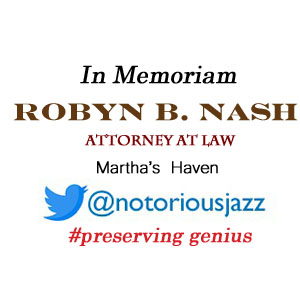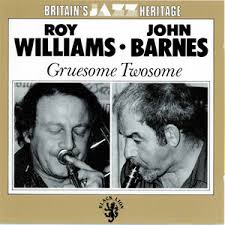
Daily Dose Of Jazz…
John Barnes was born in Manchester, England on May 15, 1932. He started out his career as a flügelhorn player in the early 1950s, and adapted his playing skills to the clarinet, an instrument he favored. He played traditional jazz with Alan Elsdon, The Mike Daniels’ Delta Jazzmen and also The Zenith Six.
In May 1964, after a bad car crash Barnes was replaced by Al Gay, until his full rehabilitation as a member of Alex Welsh band. He continued and extended his career musically from 1967 with the Scottish dixieland jazz trumpet and cornet player Alex Welsh and his Jazz Band, which lasted ten years until 1977.
He began playing alto, baritone, soprano saxophone and the flute. During this period he rose to fame in the jazz arena appearing at the Newport Jazz Festival aged 37 in 1969. His skills on baritone saxophone earned him a huge jazz fan base, some suggesting he was the best they had seen in Europe. After leaving Welsh, Barnes worked as co-leader, with trombonist Roy Williams of the Midnite Follies Orchestra, which included many American jazz artists.
John worked with Janet Jackson, Leo Sayer, Humphrey Lyttelton, Gerry Mulligan, Spike Robinson, Bobby Wellins and Keith Nichols. He considered Coleman Hawkins and Johnny Hodges to be his two main saxophone influences throughout his career.
In 2011, while on holiday in Greece, Barnes suffered a stroke. As a result of his stroke, a benefit concert was held for him the following year at the 100 Club in Oxford Street, London.
Saxophonist, clarinetist and flutist John Barnes died on April 18, 2022 at the age of 89.
More Posts: bandleader,clarinet,flute,history,instrumental,jazz,music,saxophone
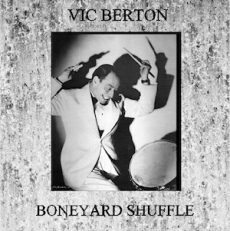
Daily Dose Of Jazz…
Vic Berton was born Victor Cohen on May 7, 1896 in Chicago, Illinois. His father was a violinist who began his son on string instruments around age five. He was hired as a percussionist at the Alhambra Theater in Milwaukee, Wisconsin in 1903 when he was only seven years old. By 16, he was playing with the Milwaukee Symphony Orchestra and the Chicago Symphony Orchestra. While serving in World War I he played drums for John Philip Sousa’s Navy band.
In the early 1920s, Berton played in the Chicago bands of Art Kahn, Paul Beise, and Arnold Johnson. He led his own ensemble which played at the Merry Gardens club. 1924 saw him become the manager of The Wolverines, and occasionally played alongside Bix Beiderbecke in the ensemble. Later in the decade, he played with Roger Wolfe Kahn, Don Voorhees, Red Nichols and Paul Whiteman. He worked extensively as a session musicianbefore moving to Los Angeles, California in 1927.
During his time in Los Angeles he played with Abe Lyman and recorded in studios for film soundtracks. Vic served as director of Paramount Films’s music division for a period and worked in the Los Angeles Philharmonic Orchestra. In the 1940s, he worked as a percussionist in the studios for 20th Century Fox.
Drummer Vic Berton died on December 26, 1951 in Hollywood, California from lung cancer.
More Posts: bandleader,drums,history,instrumental,jazz,music
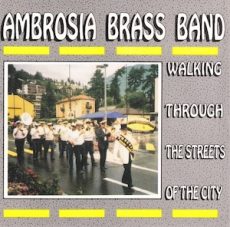
Daily Dose Of Jazz…
Nino Frasio was born April 26, 1950 in Milan, Italy and his introduction in music was taken in 1964 as a guitarist and banjoist. He graduated in 1976 from the Universitá degli Studi of Milano and studied with professor Enea Vallesi. Like most eenage players of the time he followed the Beatles craze, playing lead guitar where he also disastrously attempted to sing somewhat understandable English.
In 1969 he joined the Italian cast of Up With People! and played many performances on lead guitar and tenor banjo. Leaving the show in 1971, when he started his day job career, and since then has dedicated himself exclusively to classic jazz. His banjo studies had him discovering the other four string tuning and soon was doubling on tenor and plectrum banjo.
After performing on the national Italian TV network on a broadcast of Musica Insieme, he founded the New Orleans styled Olympia Ragtime Band in 1972. a pure New Orleans style band in which he played banjo. Frasio left the band in the early ’80s and started a busy musical career as a free-lance performer with the many jazz bands active in Northern Italy. By 1973 he was enlisted in the Italian Air Force where he began the study of cornet and tuba. Post discharged he chose to play the tuba.
In 1984 Nino joined the Ambrosia Brass Band as a sousaphonist which gained a wide popularity all over Europe playing marches in the style of the great brass bands of New Orleans. He continued freelancing gigs on banjo and guitar, and participated in a long-lasting series of weekly live radio broadcasts.
In the mid-Nineties Frasio went back to playing classic jazz with a new project called the Odd Fellows New Orleans Quartet & Band. Three years later he joined the Jumpin’ Jazz Ballroom Orchestra on banjo and guitar and the ten piece band played a repertory of classic jazz tunes of the ’20s, ’30s and ’40s.
As he aged Nino slowed down his freelance playing and started to look for his old music pals again to play his banjo in a strict New Orleans style. He went on to become a founding member of the Pegasus Brass Band, which performed at several European jazz festivals. He played regularly with the Milano Rhythm Kings led by Giorgio Alberti, then with the Savannah Serenaders, before joining on guitar the Prefisso02 Orchestra, with its beautiful repertoire of early ’40s Italian swing.
Banjoist Nino Frasio, who also plays guitar, tuba and sousaphone, continues to perform with a series of brass bands and orchestras.
More Posts: banjo,guitar,history,instrumental,jazz,music,sousaphone,tuba
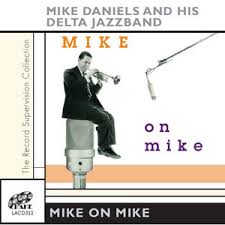
Daily Dose Of Jazz…
Mike John Brett Daniels was born April 23, 1928 in Norbiton, Kingston-upon-Thames, Surrey, London, England. He had an early interest in jazz at a very young age while studying at Aldenham School from the age of 13 in 1941 as a pupil until 1945. Taking up the trumpet at 16, his family moved to Stanmore, Middlesex, where he organized a new group called the Stanmore Stompers in 1947.
He is probably best known for his work with his own seven piece group, The Delta Jazzmen. He led this group from 1948 to 1974 and again in the 1990s. He moved to Spain briefly in the mid-1960s. He had very little recorded output during his lifetime but he recorded two albums worth of material, one of which was titled Mike on Mike from 1960.
There exists some well recorded performances by the Delta Jazzmen which featured Daniels from 1958 to 1963, along with additional input from trombone player Gordon Blundy and John Barnes on reed instruments. The rhythm section is accompanied on these works by banjo-tuba-drums.
Mike was regarded as an ensemble-orientated player who provided a solid lead combined with laid-back solos. Some of his other bands have featured talents such as Keith Nichols and John Chilton. The British Lake Label produced ‘Limited Edition’ recordings of Daniels’ work.
Trumpeter Mike Daniels, who aspired to reproduce the original styles of King Oliver, Jelly Roll Morton, Louis Armstrong, died on October 18, 2016 at the age of 88
More Posts: bandleader,history,instrumental,jazz,music,trumpet

Daily Dose Of Jazz…
Avery “Kid“ Howard was born on April 22, 1908 in New Orleans, Louisiana and began on drums at about age fourteen, but switched to cornet and then trumpet after playing with Chris Kelly.
In 1920s New Orleans, Howard played with the Eureka Brass Band, Allen’s Brass Band, and the Tuxedo Brass Band. He led his own bands late in the 1920s and early in the 1930s and it was his band which played at the jazz funeral for Buddy Petit. He played in the Palace Theatre pit orchestra from 1938 to 1943.
In 1943, he recorded with George Lewis, considered to be among his best recordings. In 1946, he led the Original Zenith Brass Band, but played only locally for the next few years. 1952 saw the trumpeter returning to playing with Lewis, where he would remain until 1961. Kid’s later recordings with Lewis are uneven because of his battle with alcoholism, which interfered with his abilities as a soloist.
Howard fell ill in 1961 and left Lewis’s band, and upon his recovery he led his own band from 1961 to 1965, and recorded sessions, several of them highly praised.
Trumpeter and bandleader Kid Howard, who was a mainstay on the New Orleans jazz scene, continued to play in New Orleans at Preservation Hall and other venues up until his death of a brain hemorrhage on March 28, 1966 in his hometown.
More Posts: bandleader,history,instrumental,jazz,music,trumpet



